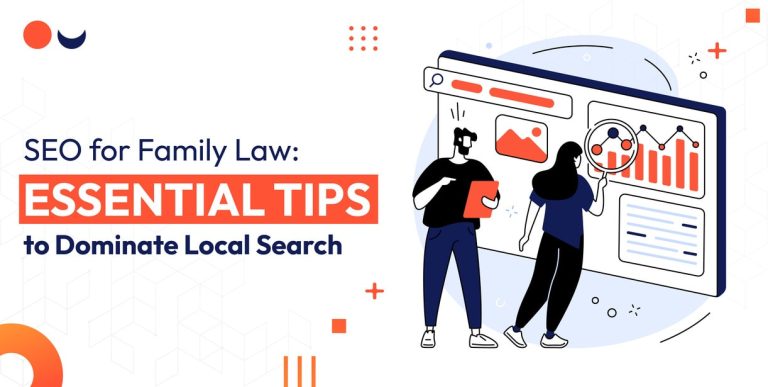LinkedIn Ads may assist businesses in reaching their target audience, increasing brand awareness, and generating valuable leads. A well-thought-out concept, precise audience targeting, appealing ad development, and ongoing optimization are necessary for a successful LinkedIn Ads campaign. This extensive lesson will lead you through the step-by-step process of set up a LinkedIn Ads campaign. You’ll learn critical ideas and best practices for getting the most out of your LinkedIn advertising expenditure, from creating campaign objectives to fine-tuning ad performance.
1. Defining Your LinkedIn Ads Campaign Strategy
Before diving into the specifics, it’s vital to have a clear campaign strategy in place. Establish your goals: lead generation, brand awareness, website traffic, or engagement. Determine the characteristics of your target audience, such as job titles, industries, company sizes, and regions. Make a budget based on your objectives and expected return on investment (ROI). Determine which ad formats, such as sponsored content, sponsored InMail, or display ads, best serve your objectives. You can concentrate your efforts and resources on achieving the desired goals with a well-defined plan.
Goal Setting and Objective Definition
In this step, creating your LinkedIn Ads campaign’s specific goals and objectives. Are you willing to generate leads, raise brand awareness, increase website traffic, or boost engagement? Setting goals can help you steer and measure the rest of your campaign approach.
Audience Analysis and Targeting
Understanding your target demography is critical for effective advertising targeting. Extensive research should be conducted to identify the characteristics of your prospective customers, such as job titles, industries, firm sizes, and geographic areas. This data can help you create highly targeted advertisements that reach the right professionals.
Budget Allocation and ROI Estimates
It is vital to develop a budget that aligns with your campaign objectives. Consider each goal’s likely return on investment (ROI) and budget accordingly. Setting precise budget constraints might assist you in managing your expenditure and ensuring that your ad performance is optimized.
Ad Format Choice
LinkedIn offers several ad options, each suited to specific campaign goals. Choose the most appropriate format for your objectives, such as sponsored content for brand visibility, sponsored InMail for personalized communications, or display ads for traffic creation. Ad types matched to your goals will boost the effectiveness of your campaign.
Timeline & Campaign Duration
Set a sensible time frame for set up a LinkedIn Ads campaign. Consider the sales cycle, seasonal trends, or events that may impact your campaign’s performance. Choosing a campaign duration ensures you have enough time to complete your objectives and make any necessary changes throughout the campaign.
Competitor study
Conduct a competitive analysis to learn about how other businesses in your industry use LinkedIn Ads. Determine successful strategies and places for improvement to lead your campaign approach. Learning from competitors may help you stay ahead of the competition.
Brand Alignment and Messaging
Create compelling ad messaging that resonates with your target demographic and is consistent with your company’s beliefs and voice. Consistent messaging reinforces your brand’s identity and builds trust with potential buyers.
CTA (Call-to-Action) Optimisation
Your call-to-action (CTA) is essential for eliciting user action. Create clear and appealing call-to-actions (CTAs) that urge users to do the intended action, such as “Sign up now,” “Download the eBook,” or “Request a demo.” A well-crafted CTA can have an important impact on the success of your campaign.
By carefully addressing each sub-heading under “Defining Your LinkedIn Ads Campaign Strategy,” you can create a comprehensive and effective plan for achieving your objectives on LinkedIn’s advertising platform.
2. LinkedIn Ads Audience Targeting
LinkedIn has extensive audience targeting features, allowing you to limit the reach of your ads to the most relevant professionals. Use LinkedIn’s targeting capabilities, such as job title, business name, industry, skills, education, and more, to ensure your advertisements reach the right individuals. Use LinkedIn’s Matched Audiences function to target existing clients or website visitors. You may also create Lookalike Audiences to target individuals similar to your target customers. Always modify and experiment with your audience targeting to enhance the efficacy of your campaign.
Accurate Demographic Targeting
Target certain demographics such as job titles, company sizes, industries, and educational backgrounds using LinkedIn’s targeting tools. This allows you to network with experts likely to be interested in your products or services.
Interest-Based Advertising
Use LinkedIn’s interest-based targeting to connect with people interested in learning more about specific topics, groups, or industry leaders. This method helps you reach out to a specific audience that is interested in what you offer.
Behavioral Targeting
LinkedIn’s behavioral targeting features can target users based on their involvement in specific LinkedIn Pages, events, or lead generation forms. This allows you to target people who have previously interacted with brand-related material, increasing the likelihood of meaningful conversions.
3. Creating Your LinkedIn Ads
Ads must be appealing to capture the attention of your intended audience. Create intriguing ad copy that matches your campaign objectives and speaks directly to your target audience’s pain points and desires. Use eye-catching images such as high-quality photos or videos to make your advertising stand out in customers’ feeds. Include a clear and compelling call-to-action (CTA) that encourages customers to do the desired action, such as visiting your website, downloading a resource, or filling out a lead form. A/B tests different ad variations to see which messaging and visuals work best for your campaign.
Alignment with Campaign Objectives
Make certain that your ad copy portrays the goals of your LinkedIn Ads campaign. Whether your goal is to increase website traffic, generate leads, or raise brand awareness, each ad component should work together to meet your established objectives.
Personalization and Relevance:
Create ad copy that directly to your target audience’s pain areas, requirements, and interests. Personalization strengthens user bonds, increasing the likelihood of engagement and conversions.
Compelling Visuals
Keep your audience’s attention when they scroll through their feeds using high-quality images or amusing videos. Visual content can provoke emotions and make your ad stand out among the stuff they view daily, increasing the likelihood of consumers pausing to read your message.
Clear Call-to-Action (CTA):
Include a clear and enticing call to action that motivates people to act. A captivating CTA, whether it’s “Get Started,” “Learn More,” “Subscribe Now,” or “Request a Demo,” compels users to take the intended action, enhancing the overall efficacy of your ad.
A/B Testing for Optimization
A/B testing allows you to experiment with other ad versions, wording, images, and CTAs. This technique allows you to evaluate which elements best resonate with your target audience and result in improved engagement or conversions. Based on this data, continuously optimize the performance of your ad material.
4. Optimizing Your LinkedIn Ads
Continuous improvement is required to optimize LinkedIn Ads campaigns effectively and efficiently. Regularly monitor and examine crucial statistics such as click-through rates (CTR), conversion rates, and cost per conversion. Valued on the insights gained, make data-driven decisions and adjust your advertising elements accordingly. To improve underperforming advertising, refine your targeting, adjust your bids, or update your ad design.
Consider doing experiments to test multiple strategies and find the optimum combination with the best results.
Regular Monitoring and Analysis
Regularly monitor the performance of your LinkedIn Ads campaign and keep an eye on critical metrics such as click-through rates (CTR), conversion rates, and cost per conversion. Analyzing this data lets you understand which ads work well and which must be enhanced.
Data-Driven Decision Making
Based on the campaign data insights, make informed decisions. Instead of making assumptions or acting on gut feelings, base your optimizations on real-time data. This strategy ensures that your efforts are evidence-based and are more likely to portray positive results.
Continuous Refinement
Continuously refine your marketing components based on data research. If certain ads are underperforming, consider altering your LinkedIn ad audience targeting to reach a more relevant demographic. Adjust your offerings to optimize your budget allocation for better outcomes. Modify your ad creative better to reflect the interests and desires of your target demographic.
By employing these optimization techniques, you can continuously enhance the performance of your LinkedIn Ads campaign, achieve your objectives more efficiently, and optimize the return on your advertising investment.
Conclusion
Creating a LinkedIn Ads campaign can be profitable if done correctly. Define your campaign goals, target the right demographic, create appealing advertising, and constantly optimize for success. LinkedIn’s advertising platform offers sophisticated tools and capabilities that, when used effectively, can have significant financial implications. By following the processes outlined in this lesson and keeping an eye on the efficacy of your campaign, you can unlock the full potential of LinkedIn Ads and achieve your marketing goals on the world’s leading professional networking platform.







